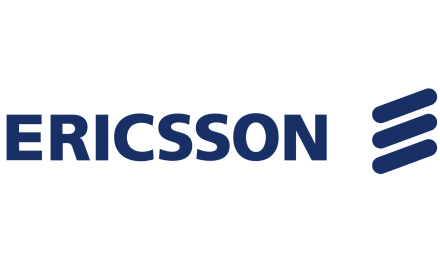
How 5G mmWave is transforming mobile experiences for everyday users

5G millimeter wave (mmWave) technology is redefining mobile experiences. It’s allowing users to access the full potential of 5G by utilizing untapped frequency bands above 24 GHz. This abundant spectrum can deliver the fastest available speeds, extreme capacity and low latency — and Qualcomm Technologies is at the forefront of its proliferation.
So, just how fast is 5G mmWave? 5G mmWave devices powered by Snapdragon platforms can deliver speeds 19x faster than sub-6 GHz 5G and 38x faster than 4G LTE. With download speeds of up to 10 Gbps, 5G mmWave is essentially ‘wireless fiber.’
5G mmWave is a game changer for businesses and consumers alike — though it’s best suited for professional consumers, also known as “prosumers.” 5G mmWave delivers the secure and seamless connectivity teams need to work collaboratively and enables access to cloud-based enterprise apps so prosumers can more easily work from anywhere. For example, prosumers can shoot, edit, and upload hi-res 8K videos or heavy CAD designs to the cloud in no time at all. And once the work day is over, users can download feature films in seconds, engage in high-quality video chats in crowded spaces, and enjoy high-speed elite gaming with low-latency and desktop-level framerates.
I recently referred to mmWave as “the missing piece of the 5G puzzle and a complementary building block of a high-performance 5G system.” It’s essential for users — and there’s also significant monetization potential and return on investment for operators.
A new whitepaper was recently published by Bell Labs Consulting, which analyzed consumer and enterprise scenarios in six European regions — France, UK, Russia, Spain, Italy, and Germany — and answered a series of important questions about the various business imperatives of 5G mmWave. Crucially, the paper concluded that 5G mmWave deployments offer an enticing business case for operators when deployed in concert with existing sub-6 GHz networks.
Bell Labs Consulting’s research found that 5G mmWave deployments — when deployed in hot zones at high-density locations — offer on average a four-year payback period with a rate of return of 20 to 30 percent after the fourth year. Bell Labs Consulting also determined that such deployments offer up to 75 percent reduction in cost per gigabyte delivered vs. an equivalent sub-6 deployment in these locations. 5G solutions can scale at specific high-density locations — train stations, airports, stadiums, college campuses, offices etc. This is a game changer, simultaneously lucrative for operators and beneficial to users.
To put its real-world implications into clearer focus, let’s look at a day in the life of three typical users who can benefit from 5G mmWave where they are and where they need it the most.
The technician
The deployment of 5G mmWave to address high-performance industrial IoT (IIoT) applications is underway. It delivers excellent indoor connectivity, even in noisy industrial settings like factories, warehouses, and logistics hubs. It also provides the capacity necessary for bandwidth-hungry use cases, such as high-definition video streaming and extended reality (VR and AR), to name just a couple.

The expansion of 5G mmWave to IIoT will inevitably make life easier for technicians like Emma, who relies on an ultrafast, low-latency connection and real-time high-speed data access to perform her work. 5G mmWave also allows Emma to access work cloud applications from home, providing better job flexibility. Large file transfers and simultaneous editing with different team members makes collaborative work a breeze, and on-premises edge analytics and data storage translate into a more productive and secure workplace. And with VR-based training sessions and 8K group video chat, Emma can conduct workplace training sessions from just about anywhere.
Emma’s 5G mmWave journey doesn’t stop when work ends — it can also make her commute home safer and more efficient. 5G mmWave enhances VRU intersection safety, allowing for 8K traffic monitoring, and cloud-based analytics. Traffic lights and digital signage dynamically adjust according to patterns, and alerts are pushed to user devices, making navigation more intuitive. Once she’s home, 5G mmWave makes it easier for Emma to kick back with her friends on an 8K video chat with low-latency, and real-time group engagement with live events. 5G mmWave propels virtual watch parties to the next level.
The businessperson
For a busy shop owner like Kai, 5G mmWave technology is crucial to his success. Always on-the-go, Kai can consistently access high-speed internet and participate in reliable HD video calls while traveling through busy transportation hubs like train stations and airports. With real-time mobile access to store data and video analytics, Kai can understand more about his customers — from buying behavior to how they move through the space. This kind of information can help Kai make decisions about inventory and the physical layout of his shop.
5G mmWave also ensures that Kai can conduct 4K video conferences with investors, review and download large files on-the-go, and access cloud-based apps with server-class processing and storage capabilities. And when it’s time to entertain investors, Kai can rely on a high-speed 5G connection to find the perfect restaurant, or the best seats at the local football stadium. Once he’s found his seats, Kai can participate in interactive gameplay with other nearby fans, and access AR game and player information with real-time stats.
The student
Vicky likes to start her day by gaming on her phone for a few minutes before heading off to class. 5G mmWave unlocks the true potential of Snapdragon Elite Gaming, offering console-quality visuals with low-latency — imperatives for any serious gamer. In-game video chat even allows Vicky to chat with her friends as they square off in a round of Fortnite.

When it’s time to hit the books, Vicky has access to consistent high-speed internet across the entire campus. 8K video broadcasts and cloud-connected AR learning content — connected display mirroring and projection and digital whiteboards, for example — allow Vicky to participate in classroom discussions and virtually collaborate with her professors and classmates off campus. She can simultaneously edit and author documents, making hybrid in-person and remote learning models as seamless as possible. And with 5G mmWave, her dorm room can easily double as a lecture hall when she can’t make it to class.
When the lecture is over, Vicky heads to her favorite store to pick up clothes for an internship interview. She doesn’t have much time, so the virtual dressing room outfitted with an AR smart mirror helps her try on without having to try on. Yes, 5G mmWave can even help you pick out the perfect outfit.
Deploying 5G mmWave in concert with existing sub-6 GHz networks will transform the lives of prosumers like Emma and Kai, and consumers like Vicky, making it easier to analyze data, interpret shopping statistics, participate in classroom discussions from virtually anywhere, and so much more. Simply put, 5G mmWave helps deliver the true potential of 5G and next-generation experiences for the end user.
















































